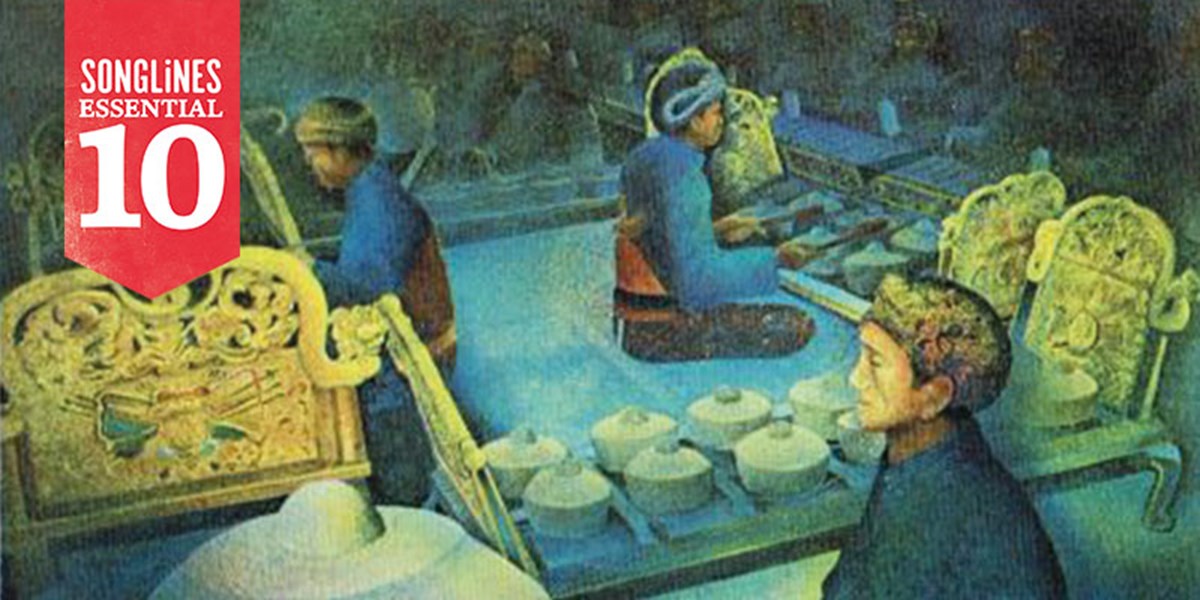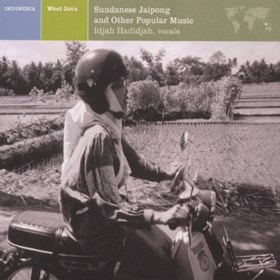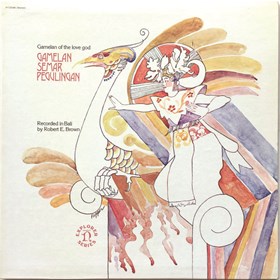Wednesday, September 4, 2019
The 10 Essential Gamelan Albums
Andy Channing picks some of his favourite recordings from the Indonesian islands of Java and Bali

1
Çudamani

The Seven-Tone Gamelan Orchestra from the Village of Pengosekan, Bali (Vital Records, 2002)
The virtuosic young musicians of Çudamani play on a hybrid gamelan called semara dana, created in the 1980s by I Wayan Berata, which allows the use of unusual modes derived from ritual gamelans such as gong luang.
2
Gamelan Orchestra of the Yogyakarta Royal Palace

Yogyakarta: Gamelan of the Kraton (Celestial Harmonies, 1997)
This is an excellent example of the loud, robust soran style, exemplified by the interlocking demung metallophones on ‘Liwung’. The royal gamelans are believed to represent cosmic power, but this powerful recording also features the accompaniment to a refined court dance called srimpi.
3
Idjah Hadidjah

West Java: Sundanese Jaipong and Other Popular Music (Nonesuch Explorer, 2003)
Originally released as Tonggeret, this classic recording is an excellent example of the dynamic jaipongan style, featuring explosive drumming and rippling interlocking saron metallophones. Hadidjah’s singing is sublime on the track ‘Tonggeret’.
4
I Wayan Loceng, I Wayan Sarga, I Ketut Balik and I Ketut Sukayana

Gender Wayang of Sukawati Village (King, 1992)
This is music to accompany performances of wayang kulit (shadow puppet theatre) and is probably the most technically demanding music to be found on Bali. A quartet of performers, led by the late I Wayan Loceng, play bronze metallophones and the shimmering beats and mesmerising, filigree textures are perfectly captured by this crystalline recording.
5
STSI Denpasar

Music of the Gamelan Gong Kebyar (Vital Records, 1996)
This is an excellent recording of the exciting, modern dynamic style of Balinese gamelan called gong kebyar (kebyar means ‘to flare up’) that quickly established itself as the most popular and dominant style. It features compositions by I Wayan Berata, together with a wide range of instrumental and dance music.
6
STSI Ensemble

Gamelan of Surakarta (JVC, 1993)
This is dramatic music for dance and drama, composed by the legendary Rahayu Supanggah and performed with awesome precision by the teaching staff at the STSI Academy in Surakarta (also known as Solo). The pieces range from the subtle, lyrical ‘Srinpi Jayaningsih’ to the compact dance drama of ‘Ronggolawé’, with its richly evocative representation of character and mood.
7
Various Artists

Anthologie des Musiques de Bali No 3 – Musiques Rituelles (Buda Musique, 1993)
This is a varied collection of diverse and lesser-known genres, from the mellifluous chimes of gamelan selonding, through the skeleton rattle of gamelan gambang, bell-like gong luang and opulent gong gedé to the playful, bittersweet gamelan angklung.
8
Various

Bali – Gamelan Semar Pegulingan: Gamelan of the Love God (Nonesuch Explorer, 1972/2003)
The gamelan semar pegulingan in Teges Kanginan is possibly the most exquisitely beautiful of all the gamelans on Bali. This recording perfectly encapsulates its clear, sweet resonance. The sound is lighter than gamelan gong kebyar and is ideally suited to ‘Legong Kraton’, the quintessential female dance.
9
Numerous Artists

Java: Court Gamelan, Volume II (Nonesuch Explorer, 1977/2003)
This is the ultimate refined Central Javanese court gamelan, played on a pair of 18th-century gamelans at the Mangkunegaran palace in Surakarta. It perfectly captures the ambience of the pendopo (a ceremonial pavilion), from the stark power of ‘Babar Layer’, to the refined ‘Ela-Ela Kalibeber’.
10
Artists (Various)

Java – Pays Sunda: Musiques Savantes Vol 2: l’Art du Gamelan Degung (Ocora, 1996)
This is delicate, refined classical Sundanese gamelan degung with a beautiful clarity, yet a profound sense of longing. The suling (bamboo flute) floats like a bird over a restrained soundscape. This calming music is the antithesis of the hectic modern Balinese style.

